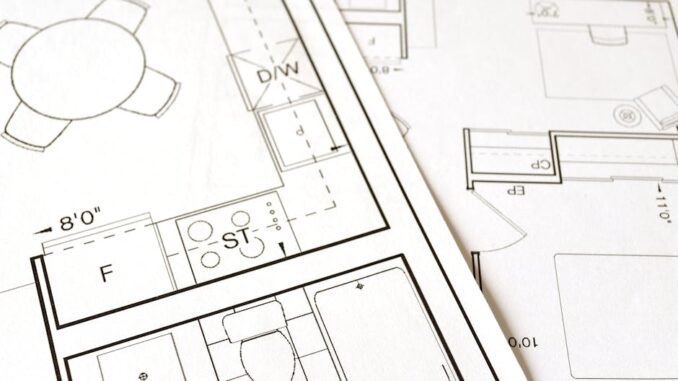
Embarking on a self-build, extension, or renovation project is an exciting endeavor, but selecting the right architect can make or break its success. Here’s a step-by-step guide to help you navigate this crucial decision.
1. Define Your Project Scope and Budget
Before reaching out to potential architects, take a moment to clarify your project’s goals. What do you envision? A spacious kitchen extension? A modernized living room? Be specific about your needs and desires. Establishing a realistic budget is equally important. Consider all potential costs, including construction, permits, and professional fees. Having a clear financial framework will guide your discussions and prevent future misunderstandings.
2. Research Potential Architects
Start by compiling a list of architects who specialize in projects similar to yours. Browse online portfolios and project galleries to get a feel for their style and expertise. For instance, if you’re inspired by a particular design, don’t hesitate to knock on the door and ask for the architect’s contact information. (houzz.com.au)
Successful low-energy building design hinges on careful planning. Focus360 Energy can help.
3. Evaluate Their Portfolio and Experience
Review the architect’s previous work to assess the quality and relevance to your project. Look for designs that resonate with your aesthetic preferences and functional requirements. An architect’s portfolio is a window into their capabilities and creativity.
4. Schedule Interviews and Build Trust
Arrange meetings with your shortlisted architects. This is your opportunity to discuss your vision, ask questions, and gauge their communication style. Trust and chemistry are vital; after all, you’ll be collaborating closely throughout the project. A good rapport can make the process smoother and more enjoyable.
5. Discuss Services and Fees
Clearly outline the services the architect will provide. Will they handle the entire design process, including obtaining permits and overseeing construction? Understand their fee structure—whether it’s a fixed price, hourly rate, or percentage of the project cost. Transparency here will prevent surprises down the line.
6. Check References and Reviews
Ask for references from previous clients to gain insights into the architect’s reliability and work ethic. Reading reviews and testimonials can also provide valuable perspectives on their professionalism and quality of work.
7. Assess Compatibility and Communication Style
Effective communication is key to a successful project. Ensure the architect is responsive, listens to your ideas, and provides constructive feedback. A collaborative approach will lead to a design that truly reflects your vision.
8. Understand the Contract and Agreement
Once you’ve selected an architect, review the contract carefully. Ensure it outlines all agreed-upon services, timelines, and costs. A well-drafted contract protects both parties and sets clear expectations.
By following these steps, you can confidently choose an architect who aligns with your project’s needs and your personal style, paving the way for a successful and satisfying building experience.


Given the emphasis on reviewing portfolios, how might virtual reality walkthroughs of past projects enhance a client’s understanding of an architect’s capabilities beyond static images?
That’s a great point! VR walkthroughs could definitely offer a much more immersive experience than traditional portfolios. Imagine ‘walking’ through a completed project and really getting a sense of the space and flow. It would also highlight the architect’s attention to detail in a way static images sometimes can’t. Thanks for sharing your thoughts!
Editor: FocusNews.Uk
Thank you to our Sponsor Focus 360 Energy
Regarding budget considerations, at what stage should contingency funds be incorporated into the project’s financial planning, and what percentage of the overall budget is generally recommended for such unforeseen expenses?
That’s a critical question! Contingency funds are best incorporated right from the initial budget planning phase. A common recommendation is around 10-20% of the total budget, depending on the project’s complexity and potential risks. This helps cushion against unexpected costs that inevitably arise during construction or renovation.
Editor: FocusNews.Uk
Thank you to our Sponsor Focus 360 Energy
Defining the project scope early on is crucial. How important is it to have potential architects visit the actual site before they provide an initial design concept and associated cost estimate? Does this significantly improve the accuracy of those early projections?
That’s a great question! Site visits are incredibly important. It allows the architect to assess the existing conditions, orientation, and potential challenges/opportunities. This firsthand knowledge definitely contributes to a more accurate design concept and a realistic cost estimate, potentially saving time and money down the line. What are your thoughts?
Editor: FocusNews.Uk
Thank you to our Sponsor Focus 360 Energy
The emphasis on defining the project scope upfront is key. Beyond aesthetics, how important is it for homeowners to articulate their lifestyle needs to architects, ensuring the design truly supports their daily routines?
That’s a fantastic point! Articulating lifestyle needs is paramount. It ensures the design isn’t just visually appealing but also functionally aligned with daily life. For example, a keen cook needs a kitchen designed for efficiency, while someone who loves to relax might want a focus on a comfortable living area. Thanks for highlighting this important aspect!
Editor: FocusNews.Uk
Thank you to our Sponsor Focus 360 Energy
Beyond stylistic preferences, how do architects balance incorporating sustainable design principles with a client’s budget constraints, particularly in renovation projects?
That’s a really important question! It often involves a phased approach, prioritizing the most impactful sustainable solutions first, such as improved insulation or energy-efficient windows. We can then explore less costly eco-friendly materials and strategies. Educating the client on long-term savings also helps justify the initial investment. What sustainable options have you been considering?
Editor: FocusNews.Uk
Thank you to our Sponsor Focus 360 Energy
Defining the project scope early is so important. I wonder, beyond the functional aspects, how much emphasis should homeowners place on communicating their emotional connection to the space they envision?